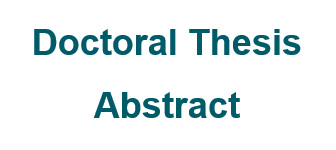Anatomical and physiological basis of adventitious root differentiation in Acca sellowiana (Myrtaceae)
Doctoral thesis abstract
DOI:
https://doi.org/10.31285/AGRO.28.1711Keywords:
domestication, juvenility, vegetative propagation, adventitious rootingAbstract
Successful development of adventitious roots (AR) in cuttings imposes an important limitation to the propagation of woody plants. In Acca sellowiana the ability to form AR is strongly affected by genotype. However, we lack an understanding of such different responses. The identification and expression analysis of genes known to be involved in the regulation of the process is an important step to elucidate the molecular mechanisms that regulate AR differentiation in A. sellowiana cuttings. We selected two genotypes with contrasting rooting ability; we studied the expression of certain genes and the anatomical and biochemical effects of exogenous indol-3-butyric acid and type of cutting in rooting experiments. New meristems developed outside the cambial ring, without callus formation by day 14 and new adventitious roots emerged by day 28. Both anatomically in vivo and biochemically in vitro, cuttings from the different genotypes behaved differently. We found anatomical differences that might explain the differences in rooting ability. An earlier development of a periderm was present in the difficult-to-root genotype. This tissue could be used as a reliable phase-change marker to distinguish juvenile from mature plant parts which have lost rooting capacity. In this study, we identified and characterized three genes that might regulate the onset of AR development in A. sellowiana: AsPIN1, AsTIR1 and AsSHR. Their expression analysis showed that in the difficult-to-root genotype AsTIR1 increases strongly, shortly after IBA induction treatment. Relative expression of AsPIN1 and AsSHR also increases 24 hours later. The biological significance of this gene expression pattern is discussed. The results obtained by an approach that combines anatomical, genetic and physiological aspects will allow a better understanding of these mechanisms and will lead to an improvement of selection efficiency including this trait in the initial steps of the domestication of new cultures and the design of better practices to improve rooting capacity of recalcitrant genotypes of interest.
Downloads

Downloads
Published
How to Cite
Issue
Section
License
Copyright (c) 2024 Agrociencia Uruguay

This work is licensed under a Creative Commons Attribution 4.0 International License.
| Article metrics | |
|---|---|
| Abstract views | |
| Galley vies | |
| PDF Views | |
| HTML views | |
| Other views | |

















